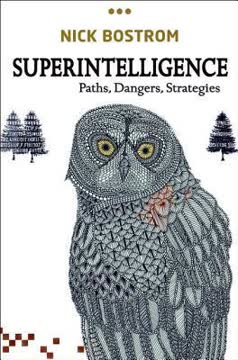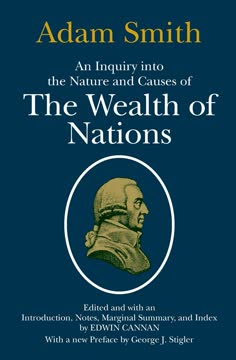Key Takeaways
1. Meat consumption has been integral to human evolution and development
Eating meat is a part of our evolutionary heritage as much as are large brains (they might actually be that large partly because of meat eating), bipedalism and symbolic language.
Evolutionary advantage: Meat consumption played a crucial role in human evolution, contributing to the development of larger brains, smaller guts, and enhanced cognitive abilities. The high-quality proteins and nutrients found in meat supported the growth of our energy-demanding brains.
Social development: Hunting and sharing meat fostered social cooperation, language development, and the evolution of complex social structures. This collaborative effort in obtaining and distributing meat resources likely contributed to the development of early human societies and cultures.
- Key evolutionary benefits of meat consumption:
- Supported brain growth and cognitive development
- Enabled more efficient digestion through smaller gut size
- Promoted social cooperation and language development
2. The global demand for meat has skyrocketed, raising environmental concerns
Global meat production rose from less than 50 Mt in 1950 to about 110 Mt in 1975; it doubled during the next 25 years, and by 2010 it was about 275 Mt, prorating to some 40 kg/capita, with the highest levels (in the US, Spain and Brazil) in excess of 100 kg/capita.
Rapid increase: The global demand for meat has grown exponentially since the mid-20th century, driven by population growth, urbanization, and rising incomes in developing countries. This surge in demand has led to intensified livestock production methods to meet the growing appetite for meat.
Environmental impact: The dramatic increase in meat production has raised significant environmental concerns, including deforestation for grazing land and feed crop cultivation, greenhouse gas emissions, water pollution, and biodiversity loss. The livestock sector has become a major contributor to climate change and environmental degradation.
- Factors driving increased meat demand:
- Population growth
- Urbanization
- Rising incomes in developing countries
- Environmental concerns:
- Deforestation
- Greenhouse gas emissions
- Water pollution
- Biodiversity loss
3. Modern meat production methods have significant environmental impacts
Livestock's impacts on water resources and water quality are obvious. Direct water demand comes largely from three different needs: all domesticated animals must have regular supply of water for drinking; while excreta of grazing animals will recycle water and the nutrients to benefit grassland soils, removal and disposal of wastes of animals raised in landless, concentrated feeding operations need water for washing and cleaning and also for mixing feeds; and relatively large volumes of water are required by slaughterhouses and meat-packing enterprises.
Resource intensive: Modern meat production, particularly in concentrated animal feeding operations (CAFOs), requires vast amounts of water, land, and energy. These intensive farming methods often lead to overgrazing, soil degradation, and water pollution from animal waste and fertilizer runoff.
Greenhouse gas emissions: The livestock sector is a significant contributor to greenhouse gas emissions, primarily through enteric fermentation in ruminants, manure management, and the cultivation of feed crops. Methane from cattle and nitrous oxide from fertilizers used in feed production are particularly potent greenhouse gases.
- Environmental impacts of modern meat production:
- High water consumption
- Land degradation and deforestation
- Water pollution from animal waste and fertilizers
- Greenhouse gas emissions (methane, nitrous oxide, carbon dioxide)
- Biodiversity loss due to habitat destruction
4. Alternatives to conventional meat production are emerging but face challenges
Cultured meat's other advantages would include a major reduction of long-distance meat shipments, significantly lowered risk of meat-borne diseases and a possibility to adjust the ratio of saturated-to-polyunsaturated fatty acids.
Emerging technologies: Alternatives to conventional meat production, such as plant-based meat substitutes and cultured (lab-grown) meat, are being developed to address environmental and ethical concerns. These technologies aim to reduce the environmental footprint of meat production while still meeting consumer demand for meat-like products.
Challenges and limitations: Despite their potential benefits, these alternatives face significant challenges in terms of scalability, cost-effectiveness, and consumer acceptance. Cultured meat, in particular, is still in its early stages and requires substantial technological advancements and regulatory approvals before it can become a viable alternative to conventional meat.
- Advantages of alternative meat technologies:
- Reduced environmental impact
- Improved animal welfare
- Potential for customized nutritional profiles
- Challenges:
- Scalability and cost-effectiveness
- Consumer acceptance and taste preferences
- Regulatory hurdles and safety concerns
5. Rational meat consumption balances nutrition, ethics, and sustainability
I have shown that global output of as little as 140 Mt/year (carcass weight) would guarantee minimum intakes compatible with good health, and production on the order of 200 Mt of meat a year could be achieved without claiming any additional grazing or arable land and with water and nutrient inputs no higher than those currently used for growing just food crops.
Balanced approach: Rational meat consumption involves finding a balance between nutritional needs, ethical considerations, and environmental sustainability. This approach recognizes the nutritional benefits of meat while acknowledging the need to reduce overall consumption and improve production methods.
Optimal consumption levels: Research suggests that moderate meat consumption, particularly of lean meats and poultry, can provide essential nutrients without the negative health and environmental impacts associated with excessive consumption. Shifting towards more sustainable sources of protein, such as legumes and fish, can complement reduced meat intake.
- Components of rational meat consumption:
- Moderation in intake (15-30 kg per capita annually)
- Emphasis on lean meats and poultry
- Incorporation of alternative protein sources
- Support for sustainable and ethical production methods
6. Reducing meat consumption in affluent nations could mitigate environmental impacts
At the same time, there does not appear to be anything in the foreseeable future that could fundamentally change today's practices of growing livestock for meat. Indeed, many arguments can be made that after half a century of focused breeding, accelerated maturation of animals and improvements in feed conversion, these advances have gone too far and are now detrimental to the well-being of animals and to the quality of the food chain and have raised environmental burdens of meat production to an unprecedented level that should not be tolerated in the future.
Overconsumption in developed countries: Affluent nations typically consume meat at levels far exceeding nutritional requirements, contributing disproportionately to the environmental impacts of meat production. Reducing meat consumption in these countries could significantly mitigate these impacts without compromising nutritional needs.
Shifting dietary patterns: Encouraging a shift towards more plant-based diets or reduced meat consumption in developed countries could free up resources for more sustainable food production. This could involve promoting "flexitarian" diets, where meat is consumed less frequently or in smaller portions, and increasing awareness of the environmental and health impacts of excessive meat consumption.
- Strategies for reducing meat consumption in affluent nations:
- Public education campaigns on the environmental impacts of meat production
- Promotion of plant-based alternatives and flexitarian diets
- Policies to incentivize reduced meat consumption (e.g., carbon taxes on meat products)
- Support for sustainable and ethical meat production methods
7. The future of meat production and consumption requires a delicate balance
Global inequalities of all kinds are not going to be eliminated in a generation or two, and hence a realistic goal is not any rapid converging toward an egalitarian consumption mean: that mean would require significant consumption cuts in some of the richest countries (halving today's average per capita supply) and some substantial increases in the poorest ones (doubling today's per capita availability). What is desirable and what should be pursued by all possible means is a gradual convergence toward that egalitarian mean combined with continuing efficiency improvements and with practical displacement of some meat consumption by environmentally less demanding animal foodstuffs.
Global disparities: The future of meat production and consumption must address the significant disparities between affluent and developing nations. While some countries consume meat far beyond nutritional needs, others struggle with malnutrition and lack of access to high-quality protein sources.
Sustainable solutions: Achieving a sustainable future for meat production and consumption requires a multifaceted approach. This includes improving production efficiency, promoting alternative protein sources, reducing waste, and addressing global inequalities in food access. Technological innovations, policy changes, and shifts in consumer behavior will all play crucial roles in this transition.
- Key components for a balanced future of meat production and consumption:
- Gradual convergence towards more equitable global consumption levels
- Continued improvements in production efficiency and sustainability
- Promotion of alternative protein sources and plant-based diets
- Addressing food waste and improving distribution systems
- Policy measures to incentivize sustainable production and consumption patterns
Last updated:
FAQ
What is "Should We Eat Meat?: Evolution and Consequences of Modern Carnivory" by Vaclav Smil about?
- Comprehensive exploration of meat: The book examines the evolution of human meat consumption, the development of modern meat production systems, and the environmental, health, and ethical consequences of carnivory.
- Multidisciplinary approach: Smil draws on archaeology, biology, nutrition, environmental science, and economics to provide a fact-based, global perspective on meat eating.
- Balanced and evidence-driven: The book avoids advocacy, instead presenting both the benefits and drawbacks of meat consumption, including its role in human evolution, societal impacts, and future prospects.
Why should I read "Should We Eat Meat?" by Vaclav Smil?
- In-depth, data-driven analysis: The book offers a detailed, quantitative examination of meat production and consumption, supported by extensive data and multidisciplinary evidence.
- Balanced ethical and environmental discussion: Smil addresses animal welfare, environmental costs, and health concerns without resorting to simplistic or ideological arguments.
- Practical insights for readers: Readers gain a nuanced understanding of the complexities of modern carnivory, helping inform personal dietary choices and policy discussions.
What are the key takeaways from "Should We Eat Meat?" by Vaclav Smil?
- Meat’s double-edged role: Meat has been crucial in human evolution and nutrition but comes with significant environmental, health, and ethical challenges in modern societies.
- No simple answers: Smil advocates for moderation and rational meat consumption, rejecting both unrestrained carnivory and total abstinence.
- Future of meat eating: The book explores alternatives like vegetarianism, flexitarian diets, and cultured meat, emphasizing the need for evidence-based, sustainable solutions.
How does Vaclav Smil explain the role of meat in human evolution and nutrition in "Should We Eat Meat?"?
- Evolutionary driver: Meat consumption contributed to larger brain size, smaller guts, and social cooperation, shaping human intelligence and culture.
- Nutritional importance: Meat provides high-quality protein, heme iron, zinc, and vitamins B6 and B12, which are essential for growth and brain development.
- Omnivorous adaptation: Humans evolved as omnivores, with digestive systems adapted to both meat and plant foods, making meat a valuable but not exclusive dietary component.
What are the nutritional benefits and health concerns of meat according to "Should We Eat Meat?" by Vaclav Smil?
- High-quality nutrients: Meat is an excellent source of complete proteins, essential amino acids, and key micronutrients like iron and B vitamins.
- Energy and fat content: Meat provides energy from proteins and fats, with fat contributing to flavor and satiety; modern trends favor leaner cuts for health reasons.
- Health risks: Excessive or processed meat consumption is linked to increased risks of cardiovascular diseases and certain cancers, though evidence is complex and sometimes inconclusive.
How does "Should We Eat Meat?" by Vaclav Smil describe modern meat production systems and their efficiency?
- Diverse production systems: The book covers traditional pastoralism, mixed farming, and intensive confined animal feeding operations (CAFOs), each with distinct environmental and economic impacts.
- Feed conversion efficiency: Pigs and poultry are the most efficient at converting feed to meat, while ruminants like cattle are less efficient but can utilize non-human-edible forage.
- Industrialization and scale: Modern meat production is dominated by large-scale, intensive systems that maximize efficiency but raise concerns about animal welfare and environmental sustainability.
What are the key environmental impacts of meat production discussed in "Should We Eat Meat?" by Vaclav Smil?
- Land use and deforestation: Meat production requires vast areas for grazing and feed crops, contributing to deforestation, soil degradation, and biodiversity loss.
- Greenhouse gas emissions: Livestock, especially ruminants, emit significant amounts of methane and nitrous oxide, contributing to climate change.
- Water use and pollution: Meat production consumes large volumes of water and generates nutrient pollution, leading to eutrophication and contamination of water supplies.
What animal welfare concerns are raised in "Should We Eat Meat?" by Vaclav Smil?
- Confinement and crowding: Intensive systems often keep animals in high-density conditions, causing stress, injuries, and limited mobility.
- Selective breeding issues: Rapid growth in broilers and other livestock can lead to health problems and suffering.
- Transport and slaughter: Animals may endure stressful transport and sometimes inhumane slaughter practices, highlighting the need for better welfare standards.
How does "Should We Eat Meat?" by Vaclav Smil address the cultural and social aspects of meat consumption?
- Meat as prestige food: Historically, meat has symbolized affluence, power, and social status, with elaborate rituals and feasts reinforcing social bonds.
- Taboos and dietary laws: Many cultures have developed meat-related taboos and religious proscriptions, shaping consumption patterns and social identity.
- Globalization of tastes: The spread of fast food and global meat chains has influenced dietary habits worldwide, sometimes overriding traditional practices.
What alternatives to traditional meat consumption does Vaclav Smil explore in "Should We Eat Meat?"?
- Vegetarian and vegan diets: The book discusses the nutritional adequacy and cultural acceptance of meatless diets, noting their limited global adoption.
- Meat substitutes and cultured meat: Smil reviews plant-based analogs and in vitro meat, highlighting technological and consumer acceptance challenges.
- Other animal proteins: The potential for substituting meat with dairy, eggs, and seafood is examined for their nutritional and environmental implications.
How can meat production and consumption be made more sustainable according to "Should We Eat Meat?" by Vaclav Smil?
- Improved management practices: Closing yield gaps, better pasture management, and efficient use of crop residues can reduce resource use.
- Reducing waste and improving welfare: Minimizing meat waste and enhancing animal living conditions are key to sustainability and ethics.
- Moderation and dietary shifts: Encouraging moderate meat intake and shifting to less resource-intensive meats can lower environmental impacts while maintaining nutritional benefits.
What are the best quotes from "Should We Eat Meat?" by Vaclav Smil and what do they mean?
- On animal sentience: “If a being suffers there can be no moral justification for refusing to take that suffering into consideration...” underscores the ethical imperative to consider animal welfare.
- On environmental costs: “Meat is undoubtedly an environmentally expensive food...” highlights the significant resource demands and environmental impacts of meat production.
- On future possibilities: “We could produce globally several hundred millions of tons of meat without ever-larger confined animal feeding operations...” expresses optimism for more rational, localized, and sustainable meat production methods.
Review Summary
Should We Eat Meat? presents a comprehensive, data-driven analysis of meat consumption's history, nutrition, and environmental impact. Smil argues for moderate meat consumption and more sustainable production methods. Readers praise the book's objectivity and thoroughness but note its dense, academic style. Many found it informative but challenging to read due to the abundance of statistics. The book is commended for its pragmatic approach, avoiding ideological stances, and providing a nuanced perspective on the complexities of meat production and consumption.
Similar Books










Download PDF
Download EPUB
.epub digital book format is ideal for reading ebooks on phones, tablets, and e-readers.







